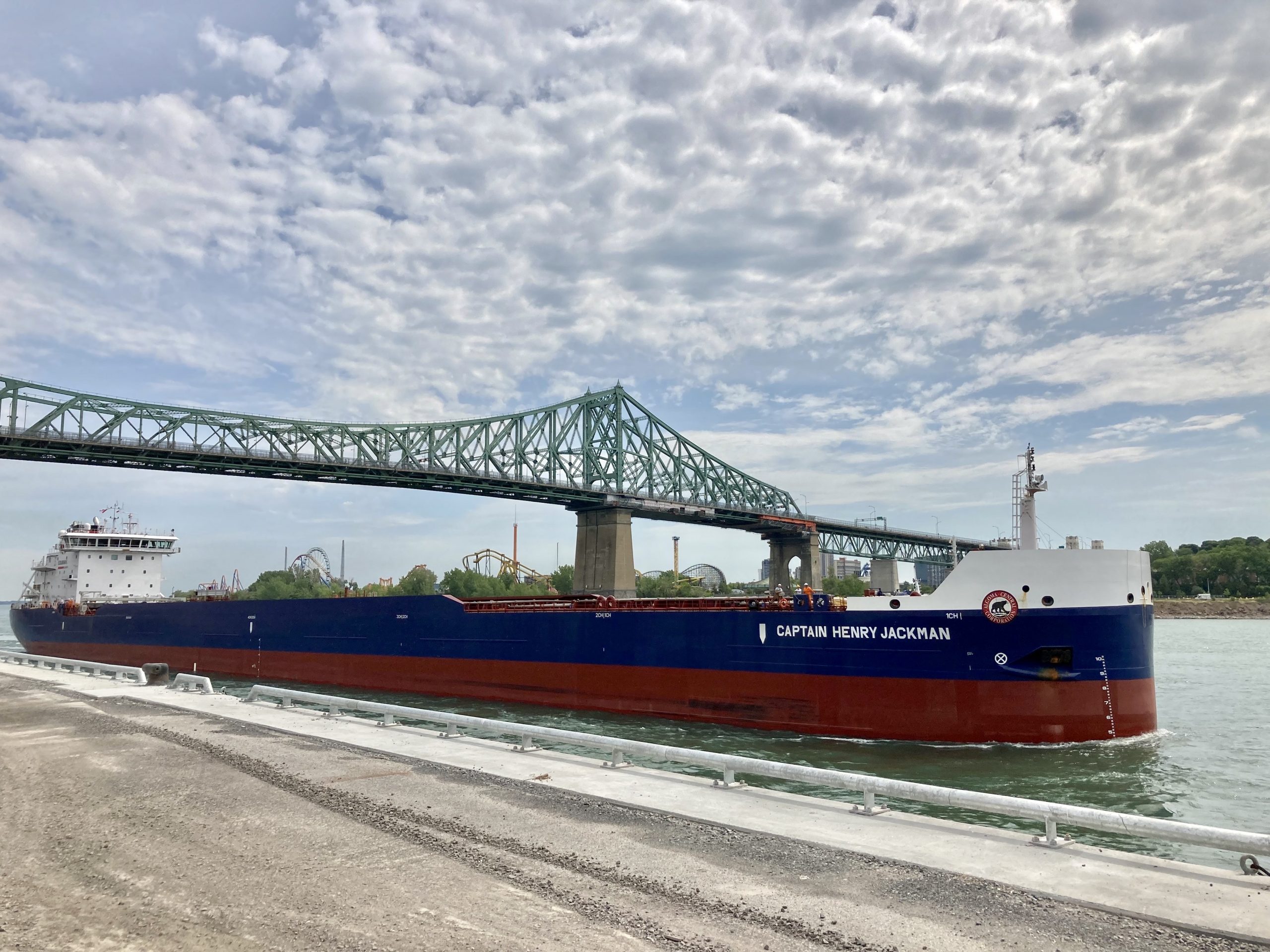Seen entering the St Lawrence Seaway at Montreal, the Captain Henry Jackman is the fifth Equinox Class gearless dry-bulk carrier and the tenth Equinox Class vessel to join the Algoma fleet in April 2021
The St. Lawrence Seaway and Canadian ports in the region are reporting a surge in commodity shipments to feed domestic construction and manufacturing activity and global export demand, according to the latest June figures.
Through June 30, total cargo shipped via the St. Lawrence Seaway was up 8.37% compared to the same period in 2020; a welcome 12.9 million metric tonnes (March 22 to June 30).
The dry bulk category, up 16% through June, is experiencing a strong bounce back and is expected to perform well for the balance of the season due to high demand across the binational Great Lakes-St. Lawrence region for construction materials including cement (up 36%) and gypsum (up 79%).
Also in the dry bulk category, coke used in steel and cement production, is up over 125% as global commodity price rises have led to increased coke exports from U.S. Great Lakes ports to France, the Netherlands and other European countries.
Iron ore volumes through the St. Lawrence Seaway are also up 14% compared to last year, feeding domestic steel production. Canadian ship operators are transporting healthy volumes of iron ore pellets from U.S. Lake Superior ports to the Port of Quebec, where they are transshipped overseas to Asia and Europe.
General cargo (up 61%) continues to be driven by steel imports from Europe, feeding manufacturing and construction activity in cities in the U.S. and Ontario. Year-to-date Canadian grain volumes are down 3% compared to 2020.
“It’s clear from our cargo numbers that commodities have been in high demand both at home and abroad and our system is well positioned to service this demand and to continue to support economic growth for North America,” said Terence Bowles, President and CEO of The St. Lawrence Seaway Management Corporation. “Canadian grain shipments have softened slightly but this performance is still above the five-year average. The big question mark will be how the new harvests fare this summer given the current hot, dry conditions.”
The record Prairie grain stock from 2020 has been substantially moved to market due to strong rail movement to Canadian ports last fall and winter. Early season loadings at the Port of Thunder Bay were effectively very strong; the current year-to-date grain tally is the third highest of the past 25 seasons.
Other cargoes at the port are rebounding from five-year lows experienced in 2020. Year-over-year gains were reported in June for both coal and potash shipments. Tim Heney, President and CEO for the Thunder Bay Port Authority, said: “We’re seeing a greater variety of cargoes than we were seeing at this time last year, which is an important indicator of success for us. At Keefer Terminal, we’ve been seeing strong imports of steel, which are expected to continue through the year, as well as a variety of project cargoes, and imported phosphate fertilizer from Morocco, which we just started bringing in last fall.”
Although corn and soya shipments decreased slightly, Port Windsor experienced another 25% jump in canola shipments in June, compared to June 2020. Construction aggregates also continue to exceed 2020 with the demand from the Gordie Howe International Bridge project and major road projects in the region. Imported structural steel is up 400% over a difficult 2020.
The southern Ontario ports of Hamilton and Oshawa (HOPA) saw commodity trends that will ultimately aid the regional economy in June. Construction-related materials such as structural steel, cement and aggregates are surging this season as half a million metric tonnes of steel have already transited the two ports not even mid-way through the season. The global demand for Ontario-grown grain continues, with more than 700,000 metric tonnes exported already this year. (Photo Algoma Central Corporation)





